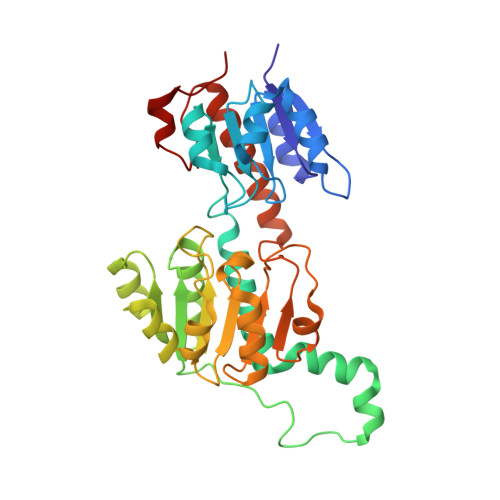New Insights Into the Mechanism of Substrates Trafficking in Glyoxylate/Hydroxypyruvate Reductases.
Lassalle, L., Engilberge, S., Madern, D., Vauclare, P., Franzetti, B., Girard, E.(2016) Sci Rep 6: 20629
- PubMed: 26865263
- DOI: https://doi.org/10.1038/srep20629
- Primary Citation of Related Structures:
5AOV, 6BII - PubMed Abstract:
Glyoxylate accumulation within cells is highly toxic. In humans, it is associated with hyperoxaluria type 2 (PH2) leading to renal failure. The glyoxylate content within cells is regulated by the NADPH/NADH dependent glyoxylate/hydroxypyruvate reductases (GRHPR). These are highly conserved enzymes with a dual activity as they are able to reduce glyoxylate to glycolate and to convert hydroxypyruvate into D-glycerate. Despite the determination of high-resolution X-ray structures, the substrate recognition mode of this class of enzymes remains unclear. We determined the structure at 2.0 Å resolution of a thermostable GRHPR from Archaea as a ternary complex in the presence of D-glycerate and NADPH. This shows a binding mode conserved between human and archeal enzymes. We also determined the first structure of GRHPR in presence of glyoxylate at 1.40 Å resolution. This revealed the pivotal role of Leu53 and Trp138 in substrate trafficking. These residues act as gatekeepers at the entrance of a tunnel connecting the active site to protein surface. Taken together, these results allowed us to propose a general model for GRHPR mode of action.
Organizational Affiliation:
Univ. Grenoble Alpes, IBS, F-38044 Grenoble, France.



















